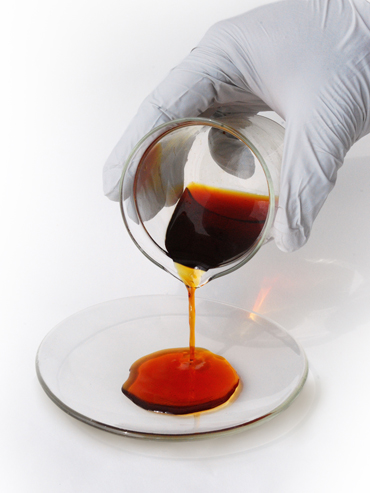Sep
30
New Pyrolysis Technology Makes Sugar for Fuels
September 30, 2011 | 2 Comments
Iowa State University’s Robert C. Brown thinks his new fast pyrolysis of lignocelluslosic biomass has the potential to be the cheapest way to produce biofuels or biorenewable chemicals. The competition is on – a post on sugar was up just two days ago on a private venture firm backed technology.
Brown keeps a small vial of brown, sweet-smelling liquid on his office table. “It looks like something you could pour on your pancakes,” he said. “In many respects, it is similar to molasses.” Brown calls it “pyrolytic molasses.”
Brown is definitely credible on this; he’s an Anson Marston Distinguished Professor in Engineering, the Gary and Donna Hoover Chair in Mechanical Engineering and the Iowa Farm Bureau Director of Iowa State’s Bioeconomy Institute.
for 35 years to get sugar out of biomass. Most of the focus has been on use of enzymes, which remains extremely expensive. What we’ve developed is a simpler method based on the heating of biomass.”
Brown and Iowa State researchers presented their ideas and findings during tcbiomass2011, the International Conference on Thermochemical Conversion Science in Chicago Sept. 28-30.
Brown also said Iowa State literally took a busload of students and researchers to the Chicago conference to present their work on thermochemical technologies, including production of sugars from biomass.
On Thursday, Sept 29. Brown addressed the conference with a plenary talk describing how large amounts of sugars can be produced from biomass by a simple pretreatment before pyrolysis. He also explained how these sugars can be economically recovered from the products of pyrolysis.
Hold on to your anti Big Oil seat – The work has been supported by the eight-year, $22.5 million ConocoPhillips Biofuels Program at Iowa State launched in April 2007. One might think Big Oil is more serious about biofuels than people in the mass media are aware.
The basics of the sugar rush is the sugars can be further processed into biofuels. Brown and other Iowa State researchers believe pyrolysis of lignocelluslosic biomass has the potential to be the cheapest way to produce biofuels or biorenewable chemicals. The fast pyrolysis of biomass applies to Iowa’s vast supply of corn stalks or wood chips. Fast pyrolysis involves quickly heating the biomass without oxygen to produce liquid or gas products.
A poster session following Brown’s talk highlighted thermochemical technologies developed by 19 Iowa State research teams, including processes that:
· increase the yield of sugar from fast pyrolysis of biomass with a pretreatment that neutralizes naturally occurring alkali that otherwise interferes with the release of sugars
· prevent burning of sugar released during pyrolysis by rapidly transporting it out of the hot reaction zone
· recover sugar from the heavy end of bio-oil that has been separated into various fractions
· separate sugars from the heavy fractions of bio-oil using a simple water-washing process.
Note to the Iowa State folks – We’d really like to see and hear the presentation and slides.
In addition to Brown, key contributors to the pyrolysis research at Iowa State include Brent Shanks, the Mike and Jean Steffenson Professor of Chemical and Biological Engineering and director of the National Science Foundation Engineering Research Center for Biorenewable Chemicals based at Iowa State; Christopher Williams, professor of civil, construction and environmental engineering; Zhiyou Wen, associate professor of food science and human nutrition; Laura Jarboe, assistant professor of chemical and biological engineering; Xianglan Bai, adjunct assistant professor of aerospace engineering; Marjorie Rover and Sunitha Sadula, research scientists at the Center for Sustainable Environmental Technologies; Dustin Dalluge, a graduate student in mechanical engineering; and Najeeb Kuzhiyil, a former doctoral student who is now working for GE Transportation in Erie, Penn.
We might want to get used to the idea that a chunk of the transport fuel market is going to be alcohols and synthetic fuels. One, or several of these biomass to sugar methods is going to come in way cheap and set off a new order of fuel market contents. Its great to see that Big Oil, and an American leading firm like ConocoPhillips backing this up. The prospect for pyrolysis to go to commercial scale is probable – maybe even inevitable.
Maybe Big Oil is further along in alternative fuels than we think.
Comments
2 Comments so far



I can think of 2 further lines of action for fast progress.
1. Use of thermo-chemical process (not bio-chemical) for further conversion to fuels.
2. Use of an MSR as the heat source fur initial dissociation of bio-mass. The biomass slurry can be just pumped through at required speed, temperature and pressure.
I still cannot help but believe this will eventually be more important as a food or feed stock than as fuel.